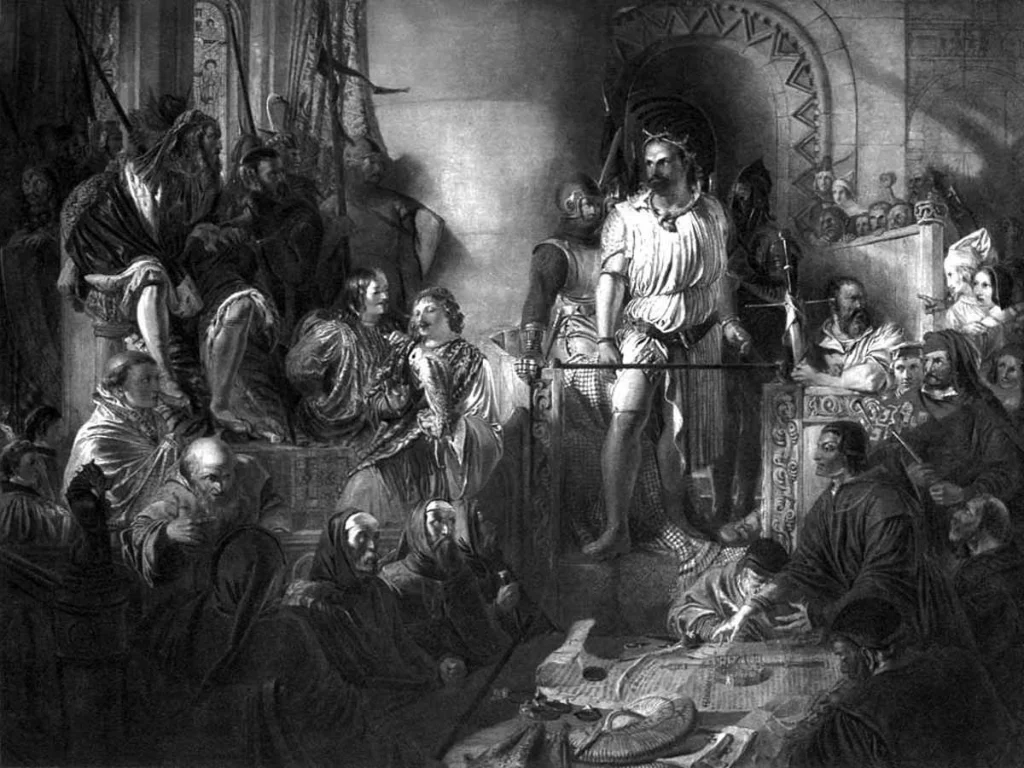In the vast tapestry of Greek mythology, no god has been more misunderstood than Hades. Cloaked in shadows and ruling the underworld, Hades often finds himself confused with death itself, demonized as a villain, or forgotten entirely in the glittering Olympian lineup. But beyond the gloom and the gates of the afterlife lies a figure far more complex. Let’s peel back the veil of fear and superstition to uncover the five key myths about the god of the underworld—and reveal the truth behind them.
Myth #1: Hades Was the Greek Equivalent of the Devil
The most enduring—and misleading—myth about Hades is that he was some ancient Greek version of Satan. But that idea would have baffled the ancient Greeks. Hades was not evil. He wasn’t tormenting souls, nor was he trying to tempt mortals to sin. His job was simple, if grim: to rule over the realm of the dead and ensure the balance of the cosmos.
Hades wasn’t feared because he was wicked; he was feared because he represented the inescapable truth of death. While Zeus ruled the skies and Poseidon the seas, Hades ruled over the underworld—a necessary and sacred part of the divine order. His kingdom was somber, but he wasn’t its jailer. He was its guardian. The Greeks didn’t even like to say his name, not out of hatred, but out of reverence and dread.
Myth #2: Hades Kidnapped Persephone and Held Her Against Her Will
This myth is widely known: Hades bursts from the earth, seizes Persephone, and drags her into the underworld, leaving her mother Demeter grieving. But like many ancient myths, this tale has layers—and those layers suggest a more nuanced story.
In Homeric hymns, Persephone is often depicted as a willing and even powerful queen, not just a victim. Later versions of the myth introduce the idea that Zeus gave Hades permission to marry Persephone, making the abduction more a divine arrangement than a rogue act of lust. Some Orphic traditions even hint that Persephone came into her own in the underworld, becoming a guide for souls and a figure of rebirth.
So, was Hades a villainous kidnapper? The answer is complex. The myth reflects ancient anxieties about marriage, transition, and loss. But it also affirms the power of Persephone herself—who was not merely stolen, but transformed.
Myth #3: Hades Was Lonely and Unloved
Unlike Zeus, who couldn’t keep his hands off mortals and goddesses alike, or Aphrodite, who lived for love, Hades is often seen as isolated and unloved. But that’s far from true.
Hades had a stable and loyal relationship with Persephone—an unusual thing among the Olympians. He wasn’t a serial philanderer. In fact, Hades may be one of the only major Greek gods to have remained largely faithful to his consort. Their bond, though born of an unconventional origin, became one of mutual respect and even affection.
In the underworld, Hades was surrounded by a loyal court: Thanatos (Death), Hypnos (Sleep), the Furies, and of course, Cerberus, the three-headed hound. Far from lonely, he ruled a kingdom rich in spirits, myths, and mysteries.
Myth #4: Hades Wanted More Power and Envied Olympus
Some modern interpretations paint Hades as a resentful brother, jealous of Zeus and Poseidon. In pop culture—think Disney’s Hercules—he’s portrayed as a scheming usurper. But there’s no ancient basis for this.
Hades drew the underworld when the three brothers divided the cosmos. There’s no record of him trying to claim more. In fact, he rarely left his realm. Unlike the squabbling of Olympus, Hades ruled quietly and efficiently. He didn’t meddle in mortal politics or divine drama unless provoked.
What he did demand was respect for the laws of death and burial. When mortals tried to cheat death—like Sisyphus—or enter his domain uninvited—like Pirithous—Hades responded with swift and stern justice. But he wasn’t greedy for power. He already had dominion over a realm that no other god dared to touch.
More Stories
Myth #5: The Underworld Was a Place of Eternal Torment
Thanks to later Christian notions of Hell, many assume the Greek underworld was a place of fire and punishment. But ancient Greek ideas were far more varied—and surprisingly neutral.
Most souls who died went to the Asphodel Meadows, a gray and shadowy realm, not unlike an eternal twilight. The very good went to the Elysian Fields—fields of happiness and peace. The very wicked, like Tantalus or Ixion, went to Tartarus, a pit of suffering reserved for a rare few.
Hades presided over all these realms, but he wasn’t a tormentor. Judgment was delivered by the three judges of the dead—Minos, Rhadamanthus, and Aeacus. Hades simply enforced the structure. He wasn’t Hell’s torturer; he was its keeper of balance.
Hades remains one of mythology’s most mysterious and maligned figures, caught in the shadows between life and death. But the truth reveals a god who was dutiful, just, and deeply important to the Greek understanding of existence. He reminds us that death is not the opposite of life, but a part of it—a realm that deserves respect, not fear.
By dispelling these five myths, we get closer to the real Hades: not a devil, not a villain, but a king in his own right.









































